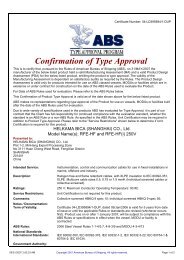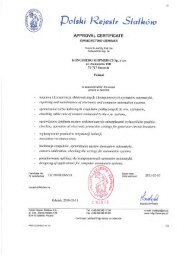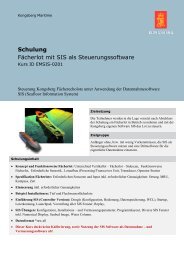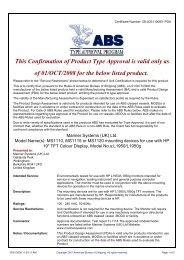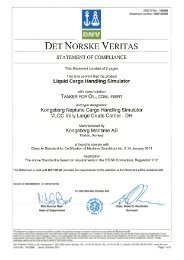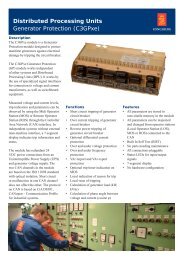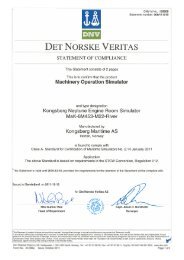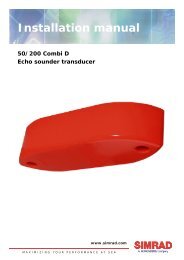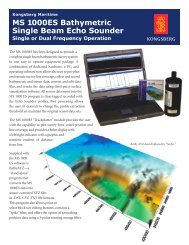Instruction manual, SPT and MPT 31x series transponders
Instruction manual, SPT and MPT 31x series transponders
Instruction manual, SPT and MPT 31x series transponders
You also want an ePaper? Increase the reach of your titles
YUMPU automatically turns print PDFs into web optimized ePapers that Google loves.
<strong>SPT</strong> <strong>and</strong> <strong>MPT</strong> <strong>31x</strong> <strong>series</strong><br />
Caution<br />
When you deploy the transponder, the anchor-weight<br />
must be lifted separately from the transponder. DO<br />
NOT attempt to lift both the transponder <strong>and</strong> the<br />
anchor-weight via the transponder -the transducer cage<br />
is only approved for lifting the transponder <strong>and</strong> the<br />
floating collar.<br />
When you deploy the transponder:<br />
The unit must be positioned with the transducer upright.<br />
Ensure a clear line of sight between the transponder’s head<br />
<strong>and</strong> the ship’s transducer.<br />
The transponder requires anchor-weight/brackets to hold the<br />
transponder securely in position on the seabed / ROV.<br />
Refer to Auxiliary equipment on page 89.<br />
Release mechanism<br />
The transponder release mechanism must be attached to a<br />
shackle. The shackle will ensure a smooth release of the<br />
transponder when requested by the operator station.<br />
Ready for operation<br />
Once deployed, the transponder is ready for operation. The<br />
sensors in your application will respond to requests from the<br />
HPR / HiPAP system, when they are enabled using telemetry.<br />
Positioning of a transponder<br />
Positioning of a transponder can be done in two ways:<br />
1 The normal way is that the topside sends a request to the<br />
transponder <strong>and</strong> then the transponder answers the request<br />
after a given time delay.<br />
2 The other way is with the transponder in beacon mode -<br />
the transponder acts as an acoustic lighthouse by<br />
transmitting pulses regularly (with a given Pulse<br />
Repetition Interval) without being interrogated.<br />
For more information, refer to the APOS on-line<br />
help.<br />
42 160820/O




